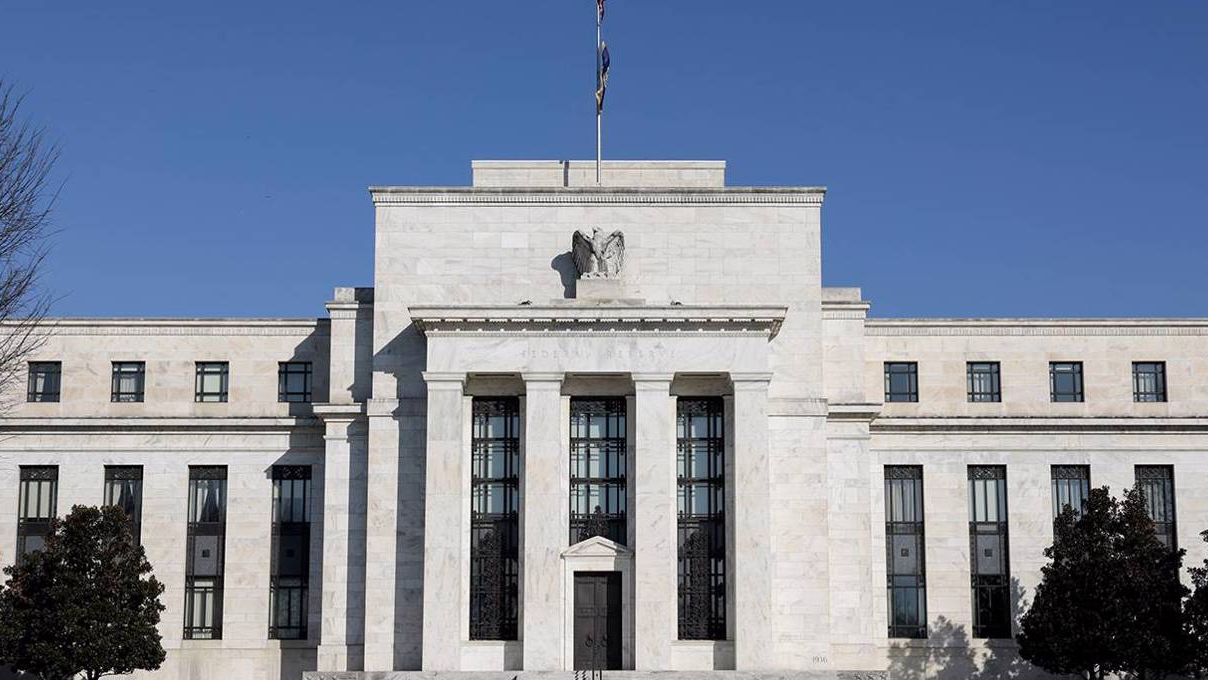
I should have listened to Alan Greenspan – at least when it comes to currency forecasting. The former chair of the Federal Reserve once told me it was a fool’s game, with the odds of getting currency calls right worse than a successful bet on a coin toss. Two years ago, I ignored the maestro’s advice and went out on a limb, predicting that the US dollar would crash by 35%. (And here.)
After a tantalizing 9% decline in the second half of 2020, the broad dollar index – the real effective exchange rate as calculated by the Bank of International Settlements – has gone the other way, soaring by 12.3% from January 2021 through May 2022. That puts the dollar 2.3% above its level in May 2020, around the time I made this seemingly foolish call. How did I get it so wrong?
Three factors shaped my thinking: America’s current-account deficit, Federal Reserve policy, and TINA (“there is no alternative”). I argued that the external deficit was headed for big trouble and that a passive Fed would do little to arrest the problem – effectively forcing the bulk of the current-account adjustment to be concentrated in a weakening currency rather than in rising interest rates. I also took a swipe at the TINA defense of the dollar and tried to make the case for euro and renminbi appreciation.
Basically, the Fed saved the dollar – aided and abetted by Russian President Vladimir Putin. The US current-account deficit, the crux of my fundamental case against the dollar, has in fact deteriorated dramatically over the past two years. The broadest measure of America’s international balance went from -2% of GDP in the first quarter of 2020 to -4.8% in the first quarter of 2022, with the just-reported data for early 2022 revealing the second-sharpest quarterly deterioration since 1960. America’s current-account deficit hasn’t been this large since mid-2008 in the depths of the global financial crisis.
My dollar-crash narrative hinged importantly on the possibility of an increasingly unstable post-pandemic current-account dynamic, with outsize federal budget deficits leading to a sharp compression of already-depressed domestic saving. The theory – actually, the national income-accounting identity – stresses that saving-short economies must import surplus saving in order to keep growing, and then run large current-account deficits in order to attract the foreign capital. In the face of exploding budget deficits, the theory worked as expected: the net domestic saving rate plunged to zero in the middle two quarters of 2020.
Surprisingly, domestic saving has since rebounded, with the net national saving rate averaging 3.25% in 2021 and moving up further to 4.2% in early 2022. Over the post-pandemic period starting in the second quarter of 2020, however, the net domestic saving rate has averaged just 2.6% of national income, a dramatic shortfall from the longer-term 45-year average of 7% from 1960 to 2005. This matches up reasonably well with the sharp recent widening of the US current-account deficit.
History demonstrates that sharply deteriorating current-account balances are not a sustainable outcome for countries lacking domestic saving. Foreign creditors will demand concessions for lending their surpluses: higher returns (interest rates), cheaper financing (the currency conversion), or both. If one option is closed off, then the other channel bears the brunt of the current-account adjustment.
This is where the Fed saved the dollar. It certainly didn’t seem that way in 2020 and early 2021. During that period, the Fed was steadfast in maintaining its overly accommodative policy stance, even in the face of an emerging inflationary shock that it initially misdiagnosed as “transitory.” I viewed this intransigence as good reason to believe that interest rates would remain uncomfortably low. As a result, the US current-account adjustment would be increasingly concentrated in the sharp depreciation of an overvalued dollar. My call for a 35% correction in the dollar was in line with the 30% average of three earlier large cyclical drops that had occurred in the 1970s, 1980s, and in the early 2000s.
When the Fed belatedly pivoted in late 2021, I should have done the same thing with my dollar call. Forward-looking financial markets correctly sensed that something had to give and moved well in anticipation of the Fed’s about-face; roughly half of the dollar’s 12.3% appreciation since January 2021 occurred prior to the Fed’s conversion the following December. Putin’s saber-rattling and subsequent military aggression in Ukraine added a significant safe-haven bid to the dollar. The euro and even the renminbi fell, instead of rising, as I had predicted, and the Japanese yen collapsed, as the Bank of Japan was more than willing to accommodate an inflation surprise as an antidote to its third “lost decade.”
There are plenty of lessons to take from this episode. First, and most obviously, don’t fight the Fed. The US central bank ultimately did the right thing; it has plenty more to do but now seems more willing to do it. Second, financial markets could not care less about theory. US monetary tightening is viewed less as a current-account funding concession by a saving-short US economy and more as a desperate effort to catch up with the yield curve. Third, the dollar’s exorbitant privilege as the world’s reserve currency is never clearer than during times of war. With the world in turmoil thanks to Putin, TINA is more seductive than ever.
Ultimately, of course, it all boils down to how much of this has already been discounted by forward-looking financial markets. I suspect that the Fed’s call and the TINA factor are already in the price of an overvalued dollar. I do not believe the same can be said about the dire US balance-of-payments prognosis. I know – that’s what I said two years ago.
Stephen S. Roach is a faculty member at Yale University and the author of Unbalanced: The Codependency of America and China and the forthcoming Accidental Conflict: America, China, and the Clash of False Narratives (Yale University Press, November 2022). Copyright: Project Syndicate, 2022, published here with permission.
10 Comments
There is simply no alternative to the U.S. dollar at the moment; the euro and China's currency do not stack up. If China would truly open its capital markets, and ensure overseas investors could count on the rule of law instead of political whims, it would be a different story.
We are likely to see depreciation of the NZ dollar in the next few years, especially if Labour is re-elected with the Green Party a necessary part of the government. Agriculture will continue to be punished. That is our only bet now for foreign exchange after the loss of international tourism and students. A wealth tax will be enacted and if it has the low threshold proposed by the Green Party, we will see capital flight as people who invest here leave for Australia and elsewhere. Then, like Zimbabwe is doing, capital controls will be put in place and interest rates will soar to attempt (too late) to control soaring inflation.
The author needs to study sectoral balances. The financial flows between the three sectors of the economy being the external sector the government sector and the private sector must always net to zero.
At least he's willing to say he got it wrong. Most pundits make very vague predictions. They say something like "This will definitely go up, unless of course this happens and it might stay the same or even go down" and then 12 months later they say how they got it right.
I have to say I have a lot more respect for someone who fronts up and admits they got it wrong. To many forecasters and economists prefer to just pretend their prior predictions don't exits. Forecasting is a tough game, you are going to get a lot of calls wrong, but owning those calls plays a big part in assigning credablity in my book.





We welcome your comments below. If you are not already registered, please register to comment.
Remember we welcome robust, respectful and insightful debate. We don't welcome abusive or defamatory comments and will de-register those repeatedly making such comments. Our current comment policy is here.